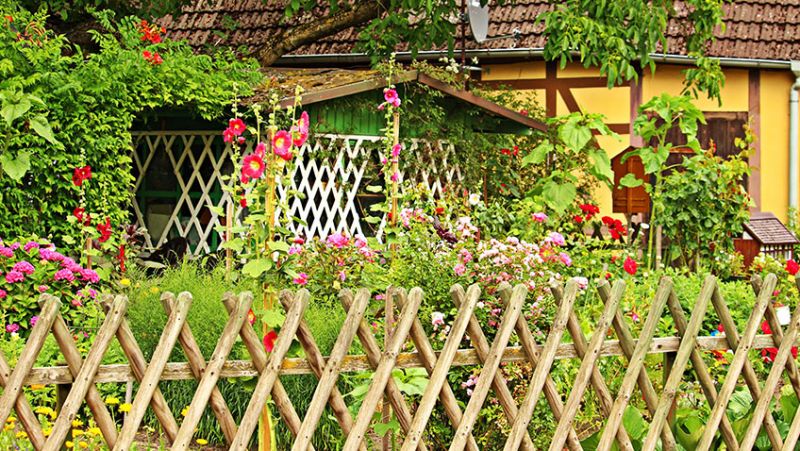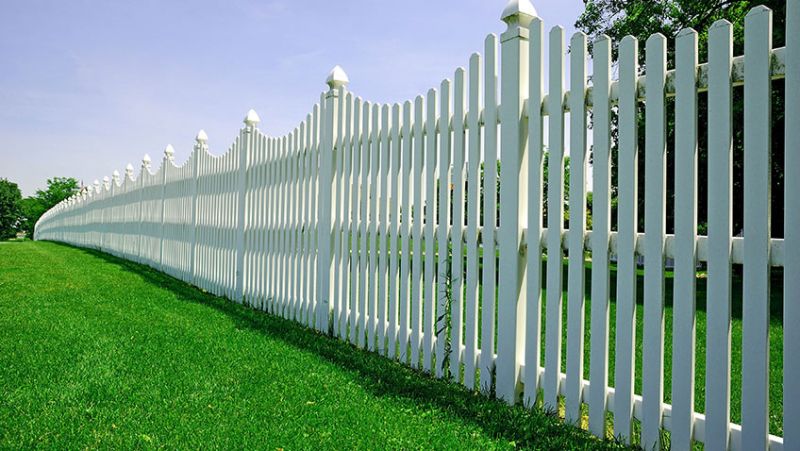
If your garden fence is starting to look old and tired, there’s a danger it could ruin the appearance of an otherwise well-kept garden. But even the most uncared fence can be brought back to life with a little TLC. In fact, there are a few tricks that can make your old fence look much fresher and less run-down without the hassle of replacing it completely.
So, if you’re looking for an easy and cost-effective way to revitalise your garden fence, read on for our top tips.
Give it a good clean
One of the simplest ways to make your garden fence look brand new is to give it a good clean. Over time, fences can become grubby and covered in algae, moss or mildew – all of which can make them look old and tired.
To clean your fence, start by using a garden hose to remove any loose dirt and debris. Then, make a solution of equal parts water and white vinegar and use this to scrub away any remaining dirt. If you’re dealing with stubborn stains, you can use a stiff-bristled brush to scrub them away.
Once you’ve finished cleaning, rinse your fence with clean water to remove any residue and allow it to dry completely.
Apply a new coat of paint or stain
If your garden fence is looking a little worse for wear, a fresh coat of paint or stain can work wonders. Not only will this help to cover up any existing damage, but it’ll also give your fence a whole new lease of life.
When choosing a paint or stain for your fence, make sure to opt for a product that’s specifically designed for outdoor use. This will ensure that it’s durable enough to withstand the elements and won’t start to peel or flake after a few weeks.
If you’re planning on painting your fence, it’s a good idea to give it a light sanding first. This will help to rough up the surface and provide a key for the new paint to adhere to. Once you’ve sanded your fence, be sure to remove any dust before you start painting.
Replace any damaged boards
If your fence is looking particularly shabby, it might be time to replace any damaged or rotten boards. This will not only improve the appearance of your fence, but it’ll also help to make it more structurally sound.
Start by removing any loose nails or screws from the damaged boards and then use a saw to cut them away from the rest of the fence. Once you’ve removed the old boards, measure and cut new ones to size before attaching them in their place.
To make sure your new boards are properly secured, use galvanised nails or outdoor-grade screws. And if you’re using pressure-treated lumber, be sure to wear gloves to avoid coming into contact with the chemicals.
Add some decorative touches
If you really want to spruce up your garden fence, there are a few decorative touches you can add. For example, you could install trellis panels or attach climbing plants to help give your fence some extra character.
Or, if you’re feeling creative, you could paint your fence in a bright colour or stencil on a pattern. This is a great way to add some personality to your outdoor space and make it truly unique.
Whatever route you decide to go down, remember that less is more. Just a few small changes can make a big difference to the overall look of your fence.
Get professional help
If your garden fence is beyond repair or you’re simply not confident in tackling the project yourself, it might be time to call in the professionals. Fence companies specialise in installing and repairing all types of fences, so they’ll be able to advise you on the best course of action for your particular situation. They can also carry out any necessary repairs or replacements, meaning you won’t have to lift a finger.
Hiring a professional can be a bit more expensive than doing the work yourself, but it’s often worth the investment. Not only will they do a great job, but they’ll also save you time and effort in the long run.


